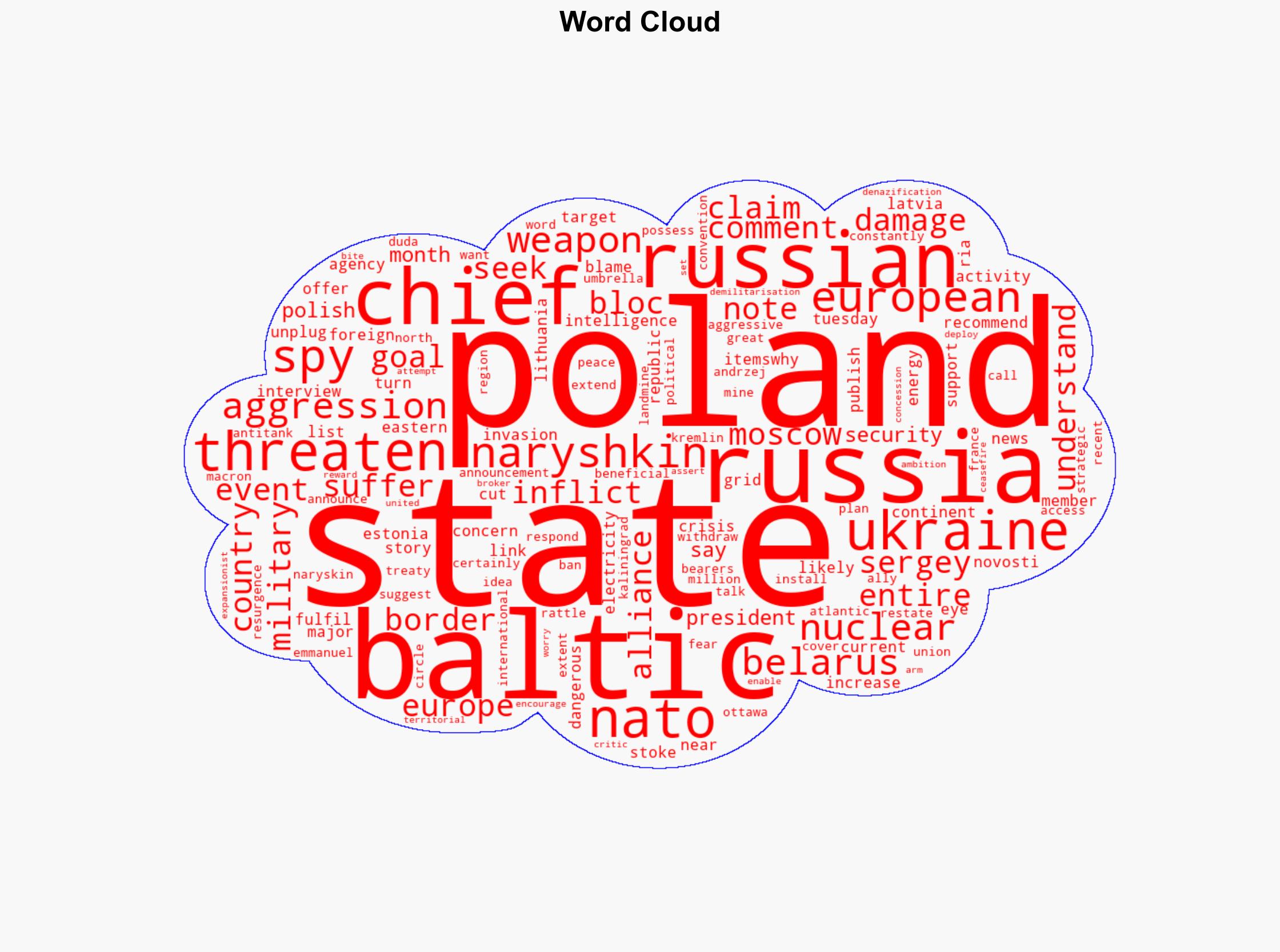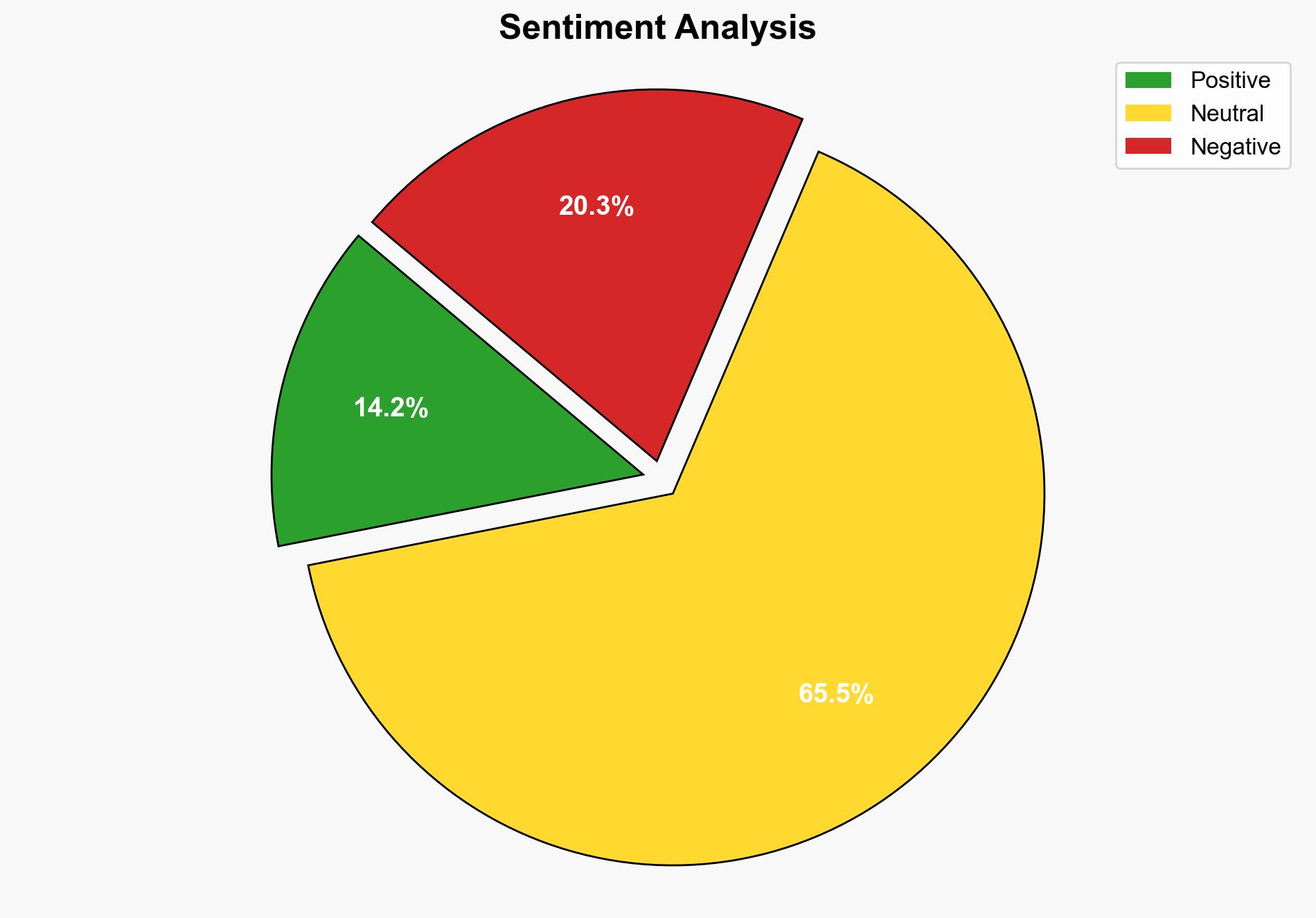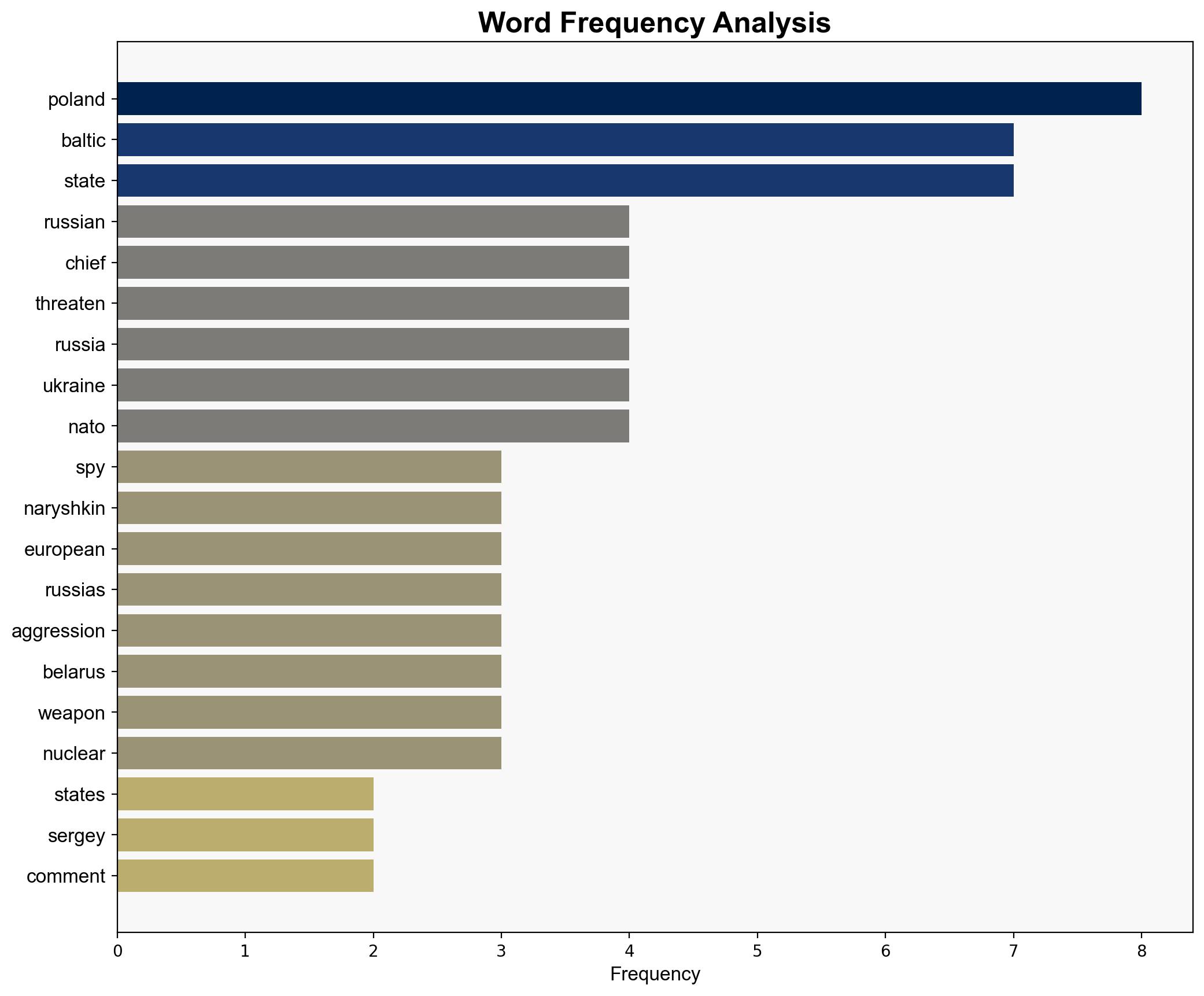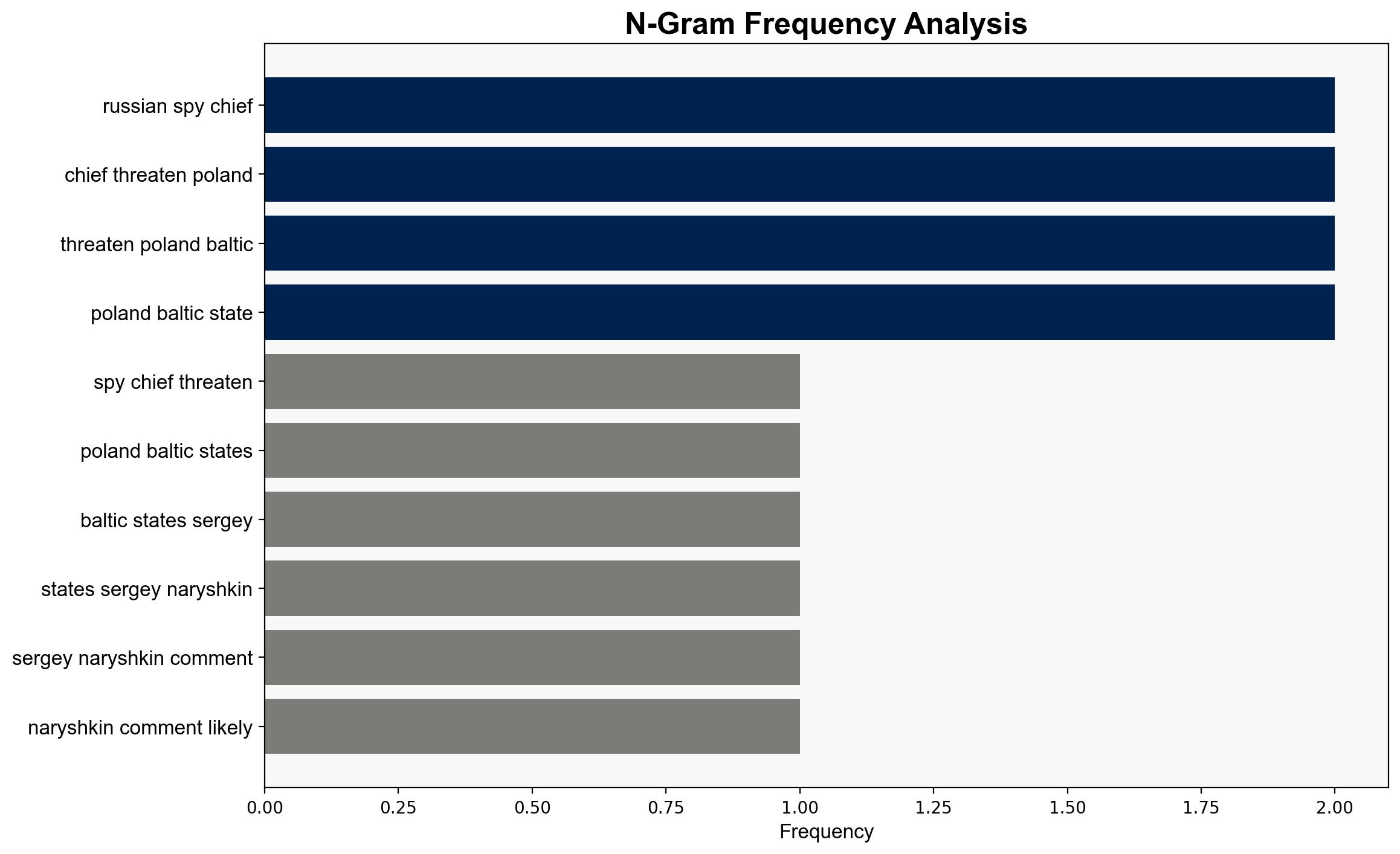Russian spy chief threatens Poland and Baltic States – Al Jazeera English
Published on: 2025-04-15
Intelligence Report: Russian spy chief threatens Poland and Baltic States – Al Jazeera English
1. BLUF (Bottom Line Up Front)
The recent comments by Sergey Naryshkin indicate a heightened threat perception towards Poland and the Baltic States, suggesting potential military actions by Russia in response to perceived NATO aggression. This development underscores the need for increased vigilance and strategic planning among NATO members to counter potential threats and maintain regional stability.
2. Detailed Analysis
The following structured analytic techniques have been applied for this analysis:
General Analysis
Sergey Naryshkin’s statements reflect Russia’s strategic posture towards NATO and its neighboring countries. The emphasis on Poland and the Baltic States as primary targets suggests a focus on NATO’s eastern flank, which Russia perceives as a threat due to increased military activities. The mention of nuclear weapons and landmines highlights the potential escalation of military tensions in the region. The rhetoric aligns with Russia’s broader geopolitical strategy to deter NATO expansion and influence in Eastern Europe.
3. Implications and Strategic Risks
The implications of Naryshkin’s comments are significant for regional security and NATO’s strategic interests. The risks include:
- Increased military tensions and potential conflicts in Eastern Europe, particularly involving Poland and the Baltic States.
- Potential destabilization of regional alliances and increased pressure on NATO to respond to Russian threats.
- Economic impacts due to heightened security measures and potential disruptions in trade and energy supplies.
4. Recommendations and Outlook
Recommendations:
- Enhance intelligence-sharing and coordination among NATO members to monitor and respond to potential threats.
- Strengthen defensive capabilities and readiness in Poland and the Baltic States to deter potential aggression.
- Engage in diplomatic efforts to de-escalate tensions and address security concerns through dialogue and negotiation.
Outlook:
Best-case scenario: Diplomatic efforts lead to a de-escalation of tensions, with Russia and NATO reaching a mutual understanding to prevent further military build-up.
Worst-case scenario: Escalation of military activities results in localized conflicts, drawing in NATO forces and leading to broader regional instability.
Most likely scenario: Continued rhetoric and posturing from both sides, with intermittent diplomatic engagements aimed at managing tensions without significant escalation.
5. Key Individuals and Entities
The report mentions significant individuals such as Sergey Naryshkin, Emmanuel Macron, and Andrzej Duda. These individuals play critical roles in shaping the geopolitical landscape and influencing strategic decisions in the context of NATO-Russia relations.




